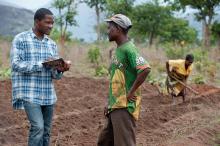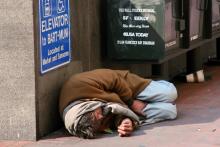Land Library
Welcome to the Land Portal Library. Explore our vast collection of open-access resources (over 74,000) including reports, journal articles, research papers, peer-reviewed publications, legal documents, videos and much more.
/ library resources
Showing items 37 through 45 of 538.USAID works to improve land and resource governance and strengthen property rights for all members of society, especially women. Currently, USAID is working in 24 countries on land tenure issues and has committed US $300 million to these programs.
The 2015 World Bank Conference on Land and Poverty will take place at the World Bank Headquarters in Washington, D.C. on March 23 - 27, 2015. The theme of the 16th annual conference is "Linking Land Tenure and Use for Shared Prosperity.”
Guest commentary by Amanda Richardson, Resource Equity, and Ailey Kaiser Hughes, Landesa.
Tim Fella, Land Tenure and Conflict Advisor - USAID, moderating the panel discussion.
In September 2015, the Sustainable Development Goals (SDGs) are to be adopted in the context of the Post-2015 Agenda. In what way do the SDGs differ from the Millennium Development Goals? What does the community of states expect from their introduction?
The demand to eradicate extreme poverty and hunger has been the centrepiece of the Millennium Development Goals; the first MDG stands for the inextricable link between poverty and people’s ability to access safe, nutritious and sufficient food.
The sustainable management of soils is crucial to achieving the Sustainable Development Goals. This is evidenced by the analysis of the role soils play across the proposed agenda. However, some key aspects have not been sufficiently considered so far.
The Sustainable Development Goals (SDGs) will amount to little unless backed by reliable indicators. Only with good metrics can the agenda be implemented and progress measured.
The Sustainable Development Goals differ radically from the current Millennium Development Goals in many aspects. Our author demonstrates the challenges that departing from a donor-oriented development framework poses – particularly for the North, and also with a view to its own development.






